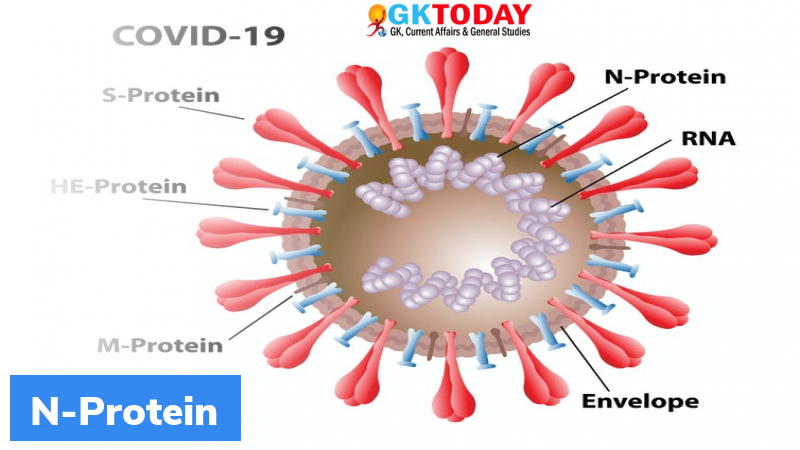N protein of Coronavirus and its role in transmission
The researchers from the Indian Institute of Science Education and Research recently showed that apart from spike proteins, the other proteins in the COVID-19 virus such as the Nucleocaspid protein or the N protein also play significant role in transmission (or infectivity) of the virus. Thus, it is not enough to develop antibodies, therapeutic drugs and entry inhibitors based on spike protein alone.
Findings
The COVID-19 has an RNA genome that is surrounded by a sphere-shaped structure. This structure comprises of various types of proteins. One amongst them is the spike protein. The spike proteins give the crown like look to the virus.
About the N-Protein
- According to the researchers, the N protein or the Nucleocapsid protein has higher infectivity than the other proteins.
- The researchers have also found that the antibodies that neutralise spike pseudo type was less effective against the N proteins.
Other proteins in COVID-19
COVID-19 is the largest genome among all the RNA viruses. It is packed in a helical capsid. This capsid is made of Nucleocaspid protein. Further it is surrounded by an envelope. There are three proteins associated with the envelope. They are membrane protein, envelope protein and spike protein. The membrane protein and envelope protein are involved in virus assembly. The spike protein mediates the virus into the host cells.
Spike of COVID-19
The spike protein of COVID-19 has three segments called ectodomain, single pass transmembrane anchor and an intracellular tail. The ectodomain has a receptor binding subunit and a membrane fusion subunit.
Month: Current Affairs - May, 2021


